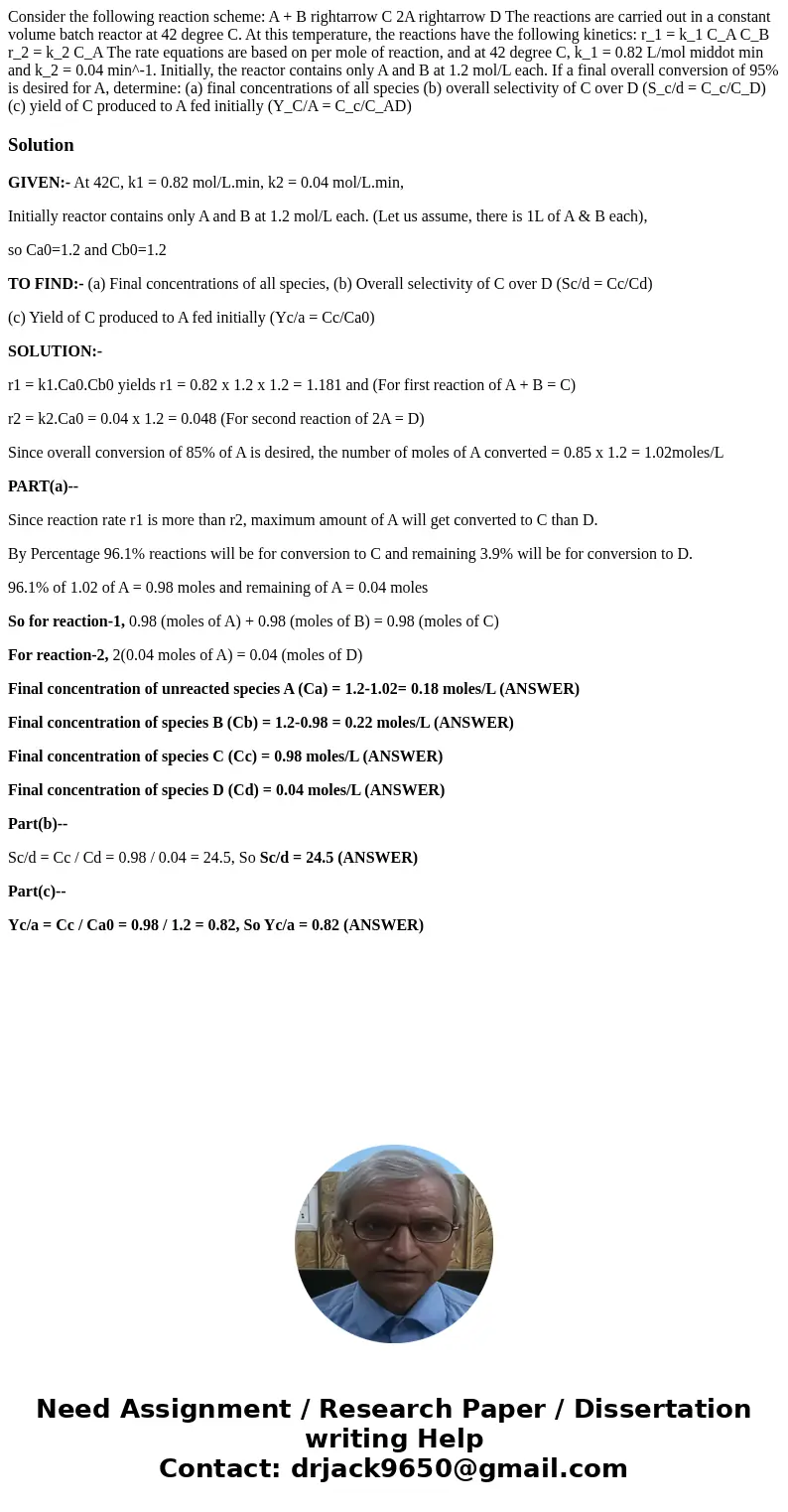Consider the following reaction scheme A B rightarrow C 2A
Solution
GIVEN:- At 42C, k1 = 0.82 mol/L.min, k2 = 0.04 mol/L.min,
Initially reactor contains only A and B at 1.2 mol/L each. (Let us assume, there is 1L of A & B each),
so Ca0=1.2 and Cb0=1.2
TO FIND:- (a) Final concentrations of all species, (b) Overall selectivity of C over D (Sc/d = Cc/Cd)
(c) Yield of C produced to A fed initially (Yc/a = Cc/Ca0)
SOLUTION:-
r1 = k1.Ca0.Cb0 yields r1 = 0.82 x 1.2 x 1.2 = 1.181 and (For first reaction of A + B = C)
r2 = k2.Ca0 = 0.04 x 1.2 = 0.048 (For second reaction of 2A = D)
Since overall conversion of 85% of A is desired, the number of moles of A converted = 0.85 x 1.2 = 1.02moles/L
PART(a)--
Since reaction rate r1 is more than r2, maximum amount of A will get converted to C than D.
By Percentage 96.1% reactions will be for conversion to C and remaining 3.9% will be for conversion to D.
96.1% of 1.02 of A = 0.98 moles and remaining of A = 0.04 moles
So for reaction-1, 0.98 (moles of A) + 0.98 (moles of B) = 0.98 (moles of C)
For reaction-2, 2(0.04 moles of A) = 0.04 (moles of D)
Final concentration of unreacted species A (Ca) = 1.2-1.02= 0.18 moles/L (ANSWER)
Final concentration of species B (Cb) = 1.2-0.98 = 0.22 moles/L (ANSWER)
Final concentration of species C (Cc) = 0.98 moles/L (ANSWER)
Final concentration of species D (Cd) = 0.04 moles/L (ANSWER)
Part(b)--
Sc/d = Cc / Cd = 0.98 / 0.04 = 24.5, So Sc/d = 24.5 (ANSWER)
Part(c)--
Yc/a = Cc / Ca0 = 0.98 / 1.2 = 0.82, So Yc/a = 0.82 (ANSWER)

 Homework Sourse
Homework Sourse